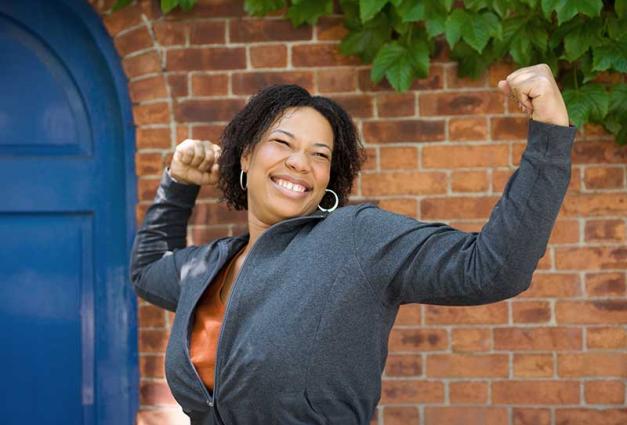Debates and discussions about gender now seem to be a mainstay in public consciousness. Our understanding of gender has been nudged and pulled, often through intense debate. As a result, changing ideas about gender now reverberate throughout daily life, affecting family dynamics, workplaces, and romantic relationships. In short, Western culture’s views regarding men and women seem to be changing.
It was not too long ago that men were viewed as breadwinners and women as homemakers. Prominent examples of caring men and competent women are now challenging these stereotypes, however. For instance, studies show that men are progressively taking on more domestic and parental duties compared to men of the past. At the same time, women now graduate from college in greater numbers than men do and occupy approximately one-third of senior management positions (for the first time in modern Western history).
But The Stereotypes Are Still There
With all this change, my colleagues and I asked how traditional views about men and women might still affect how they are judged based on two qualities often linked to gender: attractiveness (traditionally associated with the female gender) and intelligence (traditionally associated with the male gender). People likely still value attractiveness especially in women and intelligence especially in men.
Judging How “Human” A Person Is
Our way of getting at lingering stereotypes was to examine whether how “human” men and women appear depends on how attractive and intelligent they look. Why would we ask this—after all, isn’t everyone human? While the idea that some people may seem more or less human than others may sound strange at first, it actually has been investigated for decades. And equally notable, the rejection of another’s humanness, also called dehumanization, emerges in daily life. For instance, Nazis dehumanized Jews, calling them Untermenschen (“subhuman”); Hutus called Tutsis “cockroaches” during the Rwanda genocide; and slave ownership denigrated certain humans by definition.
Dehumanization is not a phenomenon that occurs only in such extreme historical examples, however. Everyday life has examples, such as in how we will often pass a homeless person on the street without any emotional impact or how drivers impassioned by road rage can treat fellow drivers like pylons in the way.
Back To Attractiveness And Intelligence
Because of stereotypes, we proposed that people would judge attractive women as more human than unattractive women, and judge intelligent-looking men as more human than unintelligent-looking men. To study this, we took photos of 206 women’s and 206 men’s faces. We then had strangers judge those photos for how attractive and intelligent each woman and man looked. We now had a set of faces to use for our main studies.
Testing For Humanness
We then asked another group of strangers to judge those same men and women on how “human” they appeared using a scale ranging from 0 (with an associated picture of a crawling ancestral primate) to 100 (with an associated picture of an upright man). We found what we expected: the more attractive the women looked, the more human they were judged to be, and the more intelligent the men looked, the more human they were judged to be. This isn’t to say that attractiveness didn’t matter for men’s humanness or that appearing intelligent didn’t matter for women’s humanness. However, we observed that looking attractive mattered more for women’s humanness than it did for men’s, and appearing intelligent mattered more for men’s humanness than it did for women’s.
In followup studies, we asked another group of strangers to make the same humanness ratings, but they also completed a scale measuring how much they endorse traditional gender stereotypes. We found that the more a rater endorsed traditional gender stereotypes, the more they cared about women’s attractiveness when rating women’s humanness and the more they cared about men’s perceived intelligence when rating men’s humanness.
In our final study, we again presented the face photos to strangers, but with a twist. Instead of asking raters to judge the faces on how human they seemed, we described a hypothetical ethical dilemma: Raters could either save the life of the individual photographed and allow five others to die, or they could sacrifice the life of the individual photographed to save the life of five others. We found that people were most willing to sacrifice the lives of unattractive women and of unintelligent-looking men, consistent with the idea that such individuals are viewed as less human and therefore more expendable.
Despite the great progress that has been made regarding gender values, traditional views about men and women remain impactful. People still pervasively value women more for their attractiveness and value men more for their intelligence. These stereotypical gender values are so deeply entrenched that they influence how “human” men and women seem. Even more, they influence the apparent worth of men and women’s lives.
For Further Reading
Alaei, R., Deska J. C., Hugenberg, K., & Rule, N. O. (2021). People attribute humanness to men and women differently based on their facial appearance. Journal of Personality and Social Psychology. https://dx.doi.org/10.1037/pspi0000364.
Haslam, N., & Loughnan, S. (2014). Dehumanization and infrahumanization. Annual Review of Psychology, 65(1), 399–423. https://doi.org/10.1146/annurev-psych-010213-115045.
Ravin Alaei is a medical student at McMaster University. He obtained his PhD in psychology in 2019 from the University of Toronto and is interested in how one’s appearance and nonverbal behavior affect their social outcomes.




